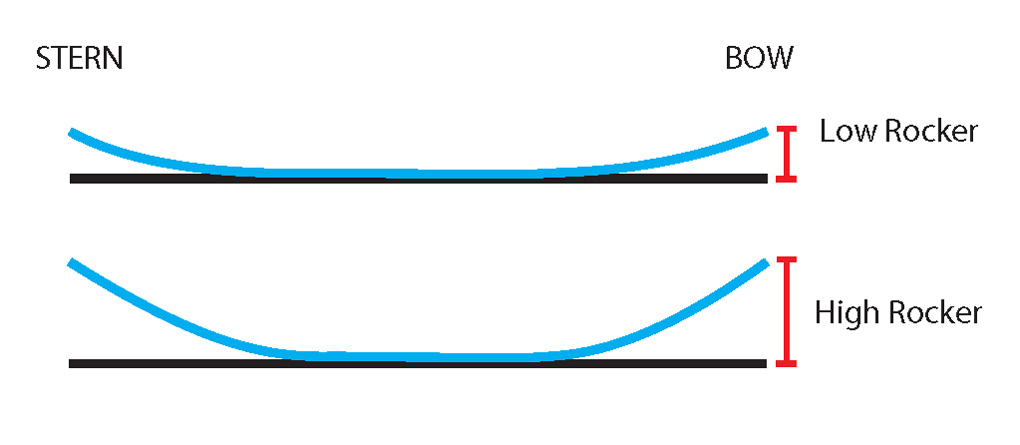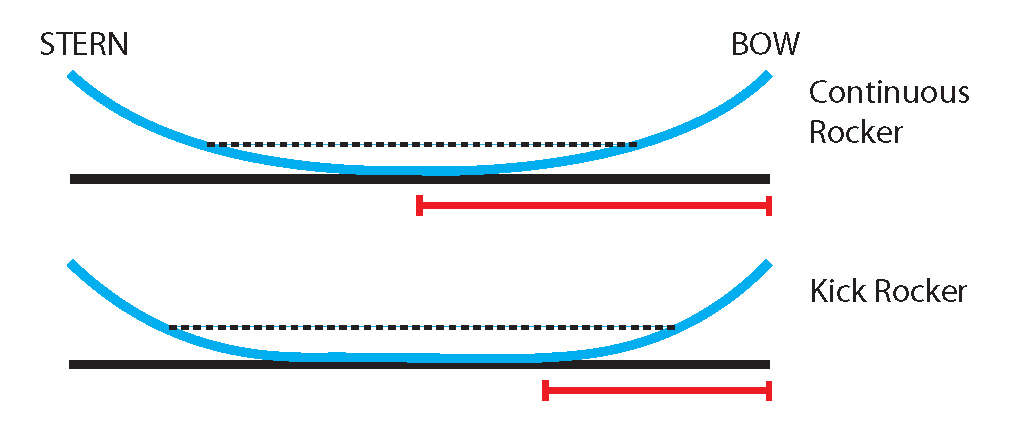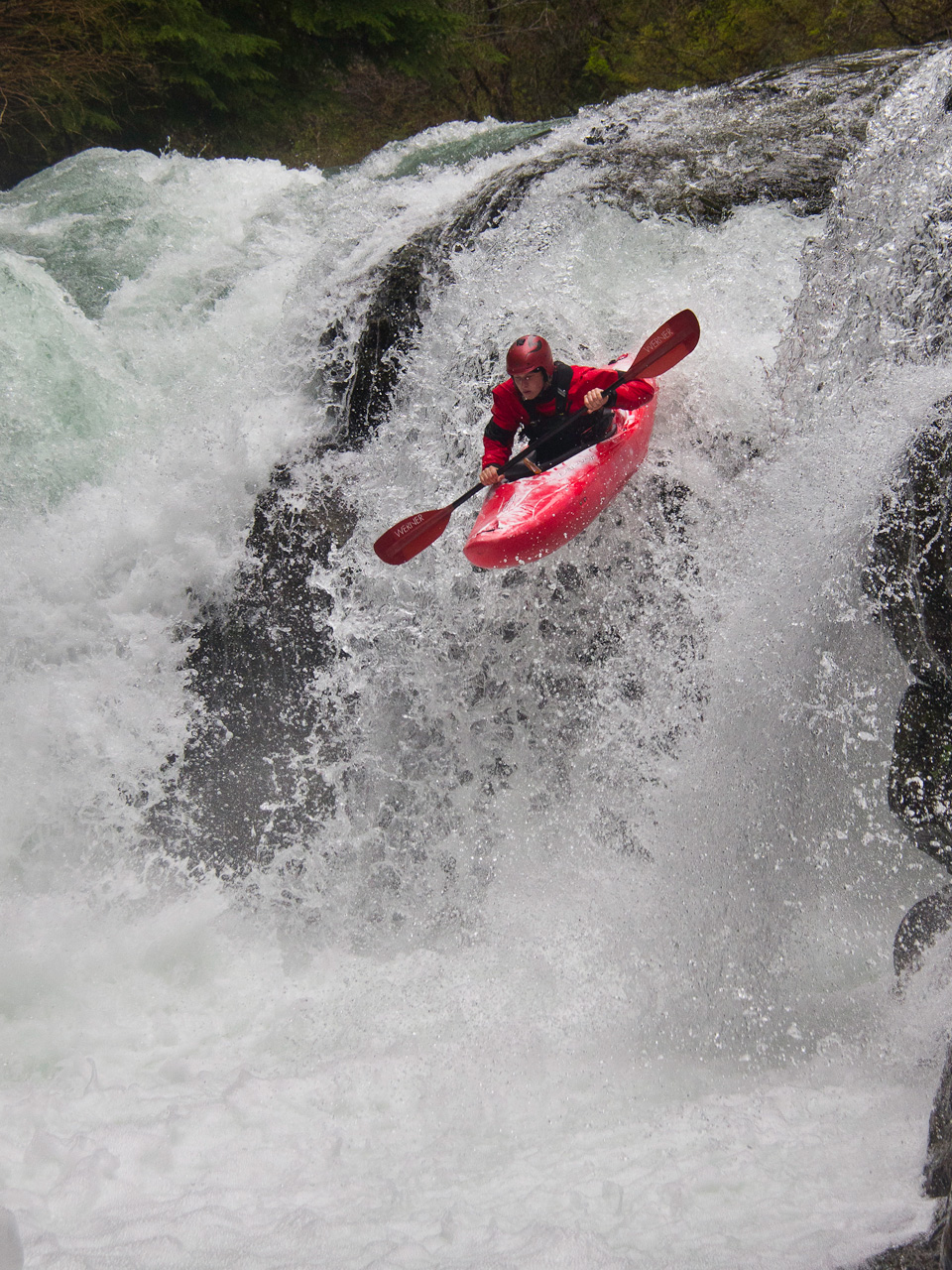So you’re thinking of buying a boat, huh?
When it comes to trying to figure out which boat, there are a dizzying number of options, and the endless list of manufacturer claims only seems to complicate the matter.
What’s most important here isn’t knowing a bunch of buzzwords, but having a basic understanding of boat designs and how those designs impact performance. That’ll go a long way toward ensuring you find a boat that fits the type of water you will be paddling.
This article will take you through the primary design factors and how they impact paddling performance, so you can move beyond the manufacturer hype and find something that best fits your needs.
Intro to Design Choices
The first decision with a new boat is choosing between “play-oriented” and “downriver-oriented” paddling. For most of us, the types of rivers we paddle usually determine this, as well as the variety of whitewater in the region where we live.
Someone who lives in the Ottawa Valley, with abundant surfing and bigwater, would likely select a “play-oriented” playboat / river-playboat, while someone in Hood River would likely prefer a “downriver-oriented” river runner or creek boat to take advantage of that area’s fast moving streams with hardly a playwave in sight.
To keep things simple, this article assumes you’ve already made your decision on a river runner or creek boat, and will discuss the design characteristics commonly found on those boats. And if you’re leaning toward a playboat or river-play boat, we have a playboat design article coming soon.
Creek Boat vs. River Runner
Boats designed primarily for downriver paddling (as opposed to primarily for surfing or freestyle) can be divided into two categories: the creek boat and the river runner. There is often significant overlap in these two categories (both in design characteristics and appearance), and many people creek in a river runner or vice versa.
But in general, creek boats are designed to run tighter, steeper, and more technical whitewater, while river runners are designed for down-river speed, catching eddies, and the occasional surf on a green wave.
There are a few design characteristics that vary between river runners and creek boats that allow boats to better accomplish their intended goals:
(1) Rocker
(2) Edge profile and hull shape, and
(3) Volume distribution.
Among these three design elements, nearly all of the variation in performance between river-runners and creek boats can be accounted for.
Rocker
The term rocker is thrown around a lot, but is not always used accurately. In its more basic form, rocker refers to the curvature or angle of a boat’s hull toward the bow and stern.
Rocker is what keeps your boat from being a box or a plank, and all boats have it. All boats do not have the same rocker, however.
Rocker can vary in three primary ways:
(1) The overall height of the bow or stern,
(2) How close to the center of the boat rocker starts, and
(3) The shape of the rocker
1. The height of a boat’s rocker dictates how high above the water the bow and stern are, and, as a result, the effective waterline of the boat (effective waterline is the length of the hull that is actually in contact with the water, and different then the overall length).

Boats with longer effective waterline—or with lower rocker—are faster (this is relatively straightforward physics) but do not turn as easily as boats with shorter effective waterline. This translates to boats with longer effective waterlines typically being better suited to river-running, where speed is key to moving through large waves and holes and the boat needs to avoid being easily knocked off line.
Shorter waterlines—or boats with higher rocker—tend to be slower but turn more easily. These boats are better suited to more technical whitewater where maneuverability is more important than speed.
2. How close to the center of the boat rocker begins determines how the boat reacts to force applied to the bow or stern from your torso. To visualize this, think of a rocking chair with legs that are flat in the middle with upturned ends versus one that is round throughout. If the rocker starts at the middle of the boat (i.e. there is no float portion of the hull), it is called continuous rocker.
When the rocker starts very close to the bow or stern, it is usually referred to as kick rocker.

Basically, this determines how well a boat boofs (that is, a maneuver to keep the entire boat flat when dropping instead of letting the bow dip, so you can carry your forward speed or avoid rocks, sort of like dropping a ledge on a bike).
Boats with continuous rocker boof extremely well, but do not behave well when surfing on a wave. Thus, boats with continuous rocker tend to be creek boats.
Boats with kick rocker tend to be more difficult to boof, but the larger flat portion of the hull makes them more fun to surf on waves.

3. The shape of the rocker largely determines how a boat will behave when entering the water from a vertical drop (i.e. a waterfall).
Boats with rocker that remain constant as you move toward the bow or stern (called linear rocker) have a smaller possible range of boat angles that still allow the bow to stay on the surface when landing a vertical drop. Conversely, boats with rocker that continually increases as you move toward the bow or stern (called progressive rocker) have a larger possible range of boat angles. This means that boofs do not need to be perfectly flat to keep the bow of the boat from burying. Instead, the paddler can land drops with more of a downward angle without “penciling.”

The advantage of this is twofold: first, it takes stress off the paddler’s back when landing larger drops, and second, it allows for more efficient transfer of vertical energy (from falling) into horizontal energy (moving quickly away from the hole at the bottom of the drop). This makes progressive rocker very desirable on creek boats and less common on river-runners.
By looking at the rocker profile of a boat and breaking it down into (1) height, (2) how close the rocker starts relative to the center of the boat, and (3) shape of the rocker, it is possible to get a good idea of how the boat will perform without ever paddling it. There are more or less infinite combinations of these three variables, and each combination will perform slightly differently. But looking at the extremes of each variable is a great place to start.

I need a kayak that is small and light weight. I am alone and not the strongest senior around. I live close to the ocean, lakes, creeks and rivers. I love to go out on the water but my problem is transporting the kayak. I need a sitin that’s fun, light and stable. I don’t need one to do tricks. Any suggestions? Thanks.
You’re in quite a pickle. An ocean kayak is long and narrow while a lake or flat-water river kayak is of mid-length and between narrow and wide. A white-water kayak for creeks and rivers is going to be short-to-mid length and around 24″ wide. Maybe something like a LiquidLogic Stinger would work for you. It’s long and narrow so it is a faster boat that people use for racing. It doesn’t have the same bottom as an ocean or recreational boat so I’m not sure how effective it’d be on ocean water — flat water it’d be fine if you have a good forward stroke. The Stinger XP is similar to the Stinger in shape and size but it comes with a dry hatch in the rear and a retractable skeg so you can track easier in flat water; those features come at the expense of the maneuverability. The Stinger XP weighs 55lbs which is heavy for a kayak, but since it has dry storage maybe you can fit a kayak pull cart in the back?
And be careful paddling alone and always wear a PFD (and helmet if there’s rocks!)
If planning to do some traveling and hitting a lot of different types of water some mild class 1 -2 rivers and also making my way to some more serious class 4- 5 rivers is a Jackson zen a good all around choice?
Awesome article, thank you so much!
Great article! Thanks. I am designing a wooden pirogue/canoe for use paddling or with a small electric troll motor. For inland SE river class 1 or 2…more class one. I need to be able to paddle upstream. My current canoe is a Mad River Explorer, 15 ft. The soft edge hull design without keel is very helpful going upstream and diagonally across current. Trying to decide length and hull shape. Targeting 12 to 14 ft, ( I am 240lbs 6 ft.) This would be a one man boat. I am leaning toward a soft edge planning hull. The widest portion of the hull would be toward the stern maybe 32 inches tapering to a point on the bow. I don’t think I can do a proper soft edge with plywood so leaning toward cedar strap. I also want to keep the hull thickness to a minimum. Thinking of an interior deck of thin hardwood reinforced in the small area in front of the seat where I step 90% of the time. Would like any advise about hull thickness, design , location of the seat, any advice. Thank you
So is there a review site/channel that reviews grade 2-3 river running? I know I will not reach grade 4 for several good reasons.
The videos I have found video’s seem to focus on grade 4-5 running to the sound of adrenalinised music, and are always highly complimentary. Every year the new boat is amazing, and I can’t tell who is sponsored.